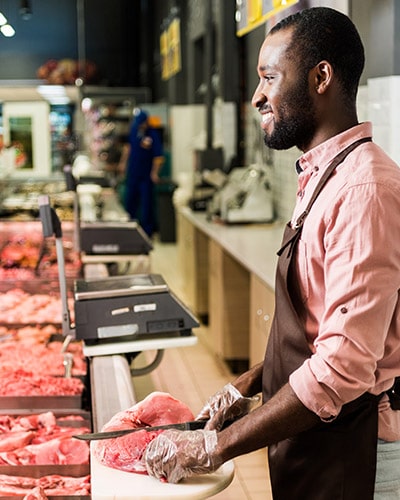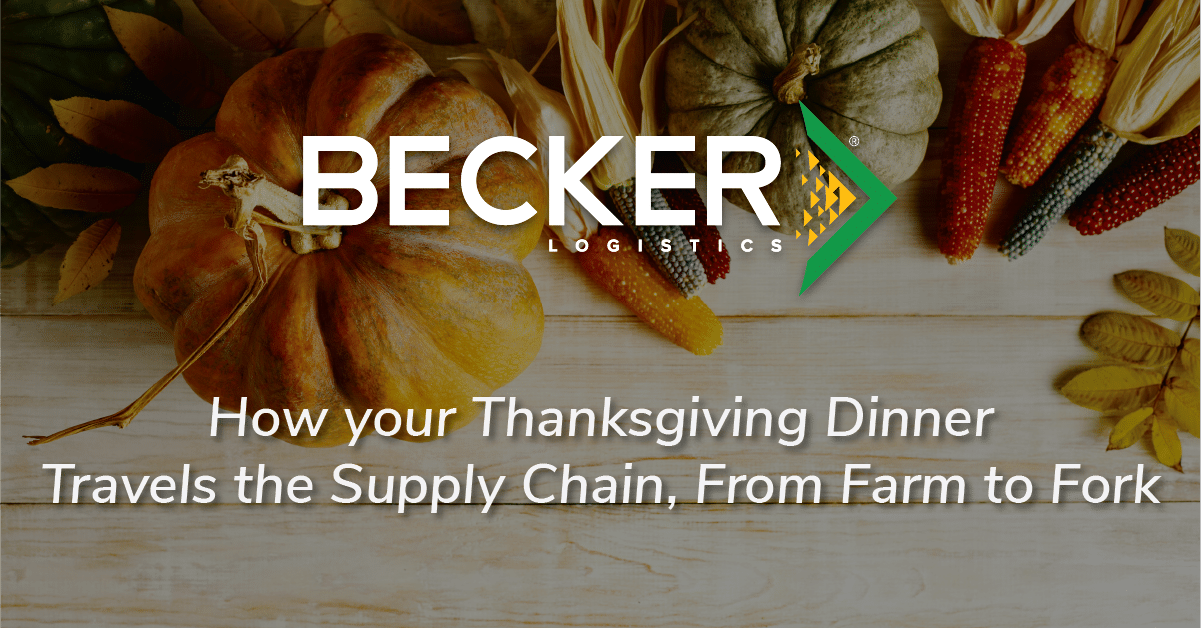Do you know all of the steps involved to bring your Thanksgiving dinner from the farm to your fork? It’s a grand and complex system with multiple players involved, sometimes more than once. There’s the farmer, the processor, the consumer, and then the transportation providers which connect it all.
Each step plays a vital part in the process of shipping food and beverages. Additionally, having visibility into the system and finding improvements is vital. The end consumer deserves to know that their food is fresh when being purchased. Providing this guarantee requires work from everyone involved, starting with the farmer.
The Farmer
Practically all food is going to start at some kind of farm. There are countless rules and regulations in place to ensure that farmers are producing their food safely. Also, along with the rules, are new methods and technology that allow farmers to produce fresher food and get it all out to the next steps sooner.
Additionally, there are consumer trends that place importance on more organic processes with less chemicals. However, no matter what system is being used, farm owners make sure that are properly using fertilizers, antibiotics, and pesticides.
Once the products have been grown, harvested, and packaged they are ready to move on to the next step, processing.
The Processor
Processing food correctly is critical in order to get food product to the end consumer safely. There are several measures that need to be taken into consideration; freshness, nutrition, convenience, variety, affordability, and the end product.
The processing stage can vary wildly depending on what the end good is, and many times there will be multiple processing stages. However, for the farm to fork system, you want to cut this into as few steps as possible. The whole goal is to make all food go from the farmer to the consumer with as few stops as possible.
Also, because of the complexity, there are many standards put into place in this stage. These standards help to develop safe manufacturing of food and help to identify where things may go wrong.
The Consumer
And then finally there is the consumer who receives the finished product. They should be able to trust that the system in place works and they the food they are buying is fresh and ready to eat. The whole farm to fork system is in place to build this trust so that the consumer knows the food they are getting is high quality and okay to serve.
There are consistent efforts to make sure that this process is streamlined for safety. Also, new innovations are always being found which help bring the food to the consumer more directly.

Transportation and Warehouse
The transportation and warehousing are what hold this entire process together. It is up to these transportation providers to help close the gaps between food manufactures and consumers. All while also making sure that the food they are shipping meets expectations and regulations.
There is a lot that can go wrong while shipping which is why the standard for food shipping is so high. Luckily, it’s a lot easier now than it used to be. We have much better refrigerated trailers, the ability to track trucks along the way, and have better packaging. This all leads to a better supply chain and food going direct from the farm to your fork.
Farm to Fork with Becker Logistics
At Becker Logistics we place a strong emphasis on quality and care when handling food-grade products. We have the teams and processes to ensure the transportation process goes smoothly and that everything arrives as expected. To see if Becker Logistics is the company to handle your shipping then reach out and contact us. Additionally, you can request a quote and get started today.
